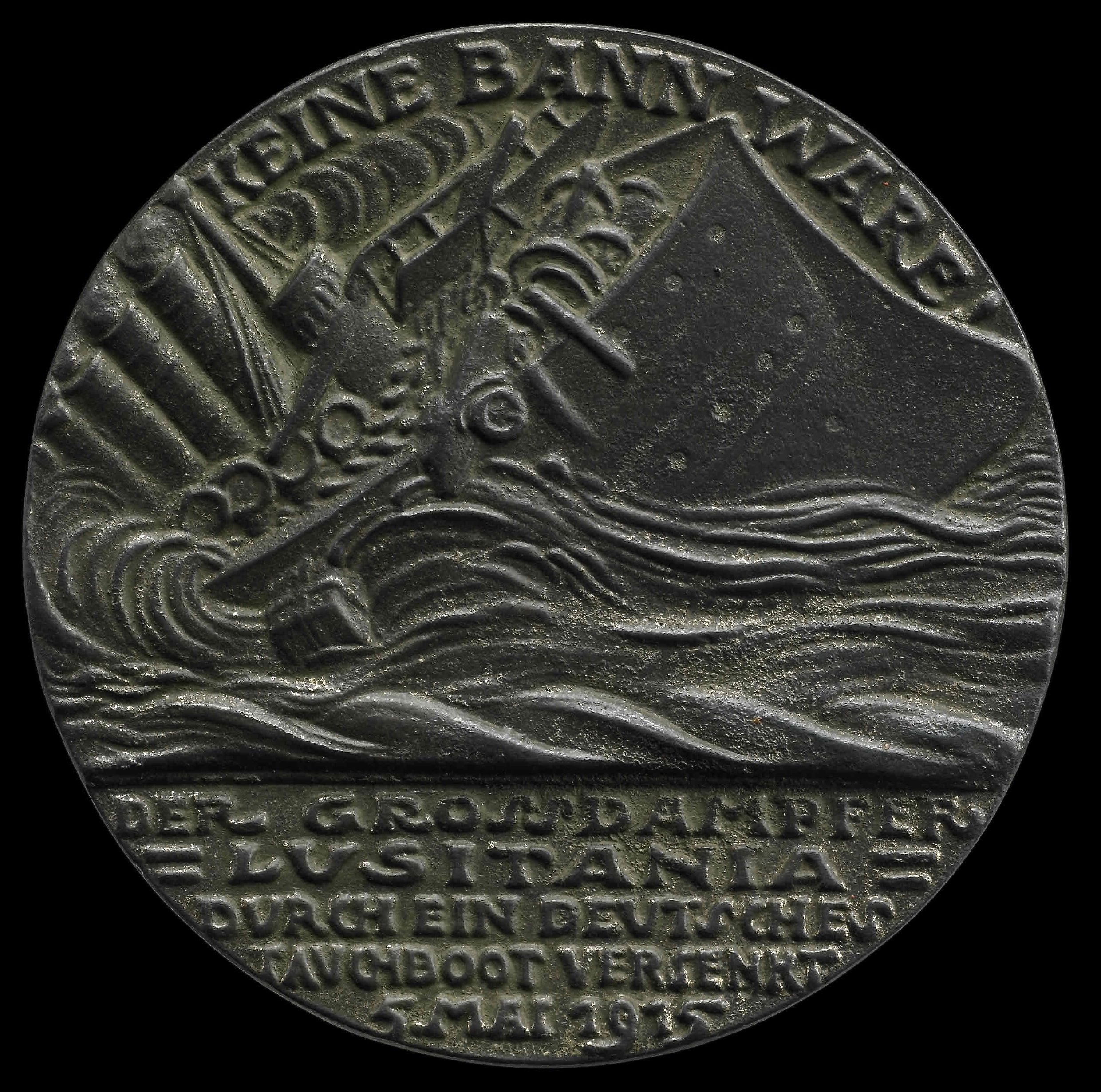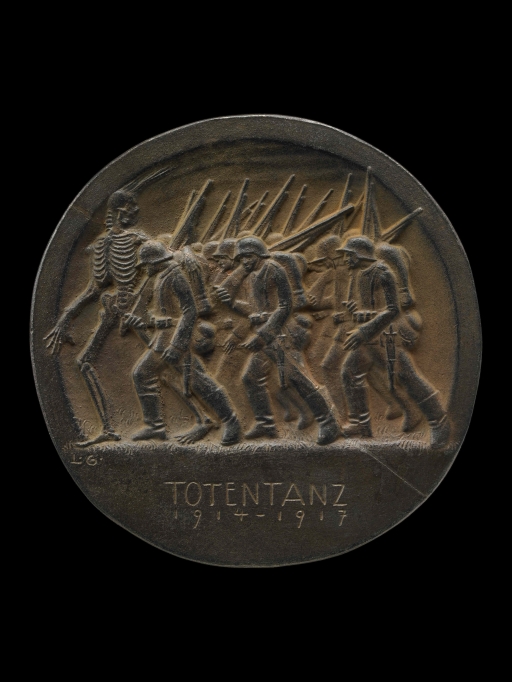As part of the First World War Centenary commemorations, the British Museum in London is looking at the German experience of the conflict with an exhibition of medals made by artists.
‘The other side of the medal: how Germany saw the First World War’ displays the work of artists who lived in Germany between 1914 and 1919.
Described as ‘challenging and at times deliberately provocative,’ the Museum says a number of these medals were intended to influence popular opinion against Germany’s enemies.
Others, however, provide a more universal criticism of the futility of war and waste of human life.
The German medals, while not officially produced or sanctioned, nevertheless caused considerable controversy when they first appeared. ‘Lusitania’, by Karl Goetz, illustrates the sinking of the transatlantic passenger liner by a German U-boat in 1915.
Goetz depicts the stricken ship laden with armaments. The reverse shows Death selling tickets to passengers alongside the caption ‘Business as Usual’.

‘Lusitania’ Karl Goetz 1915, Germany, cast iron medal © Trustees of the British Museum
British copies of the medal were even made and sold during a fierce propaganda campaign that attempted to incite public opinion against Germany.
In response, Sir Arthur Evans, archaeologist, numismatist and British Museum trustee, organised a competition in 1916 for the best British medal featuring the Battle of Jutland between the Royal Navy and the German Navy. The winning design, which was awarded a prize of £100, features in the exhibition.
As initial enthusiasm for the war descended into horror, the British Museum explains how German medallists revived the medieval Dance of Death motif to present an almost apocalyptic view of the conflict.
They were also keen to consider the collateral effects of war, depicting refugees displaced by invasion or people starving as a result of food shortages.
By doing so, the Museum says they engaged with the totality of the First World War in a way that didn’t happen in the other warring nations.
Modernist
German medals were unusually modernist in style, at least in comparison with the more decorative French tradition, serving to emphasise the brutality of the conflict.
French medals were typically made in an Art Nouveau style, full of allegorical allusions to the war. The Museum points out that unlike their German counterparts, they did not tend to question the moral implications of the conflict or confront its human cost.
In Britain, very few medals were produced in connection with the war.
Realising the significance of German art medals as historical documents, the British Museum was highly proactive in acquiring them even before the end of the war.
A century on, it says this display offers a fresh perspective to our understanding of life and death during the First World War.
‘The other side of the medal: how Germany saw the First World War’ can be seen at the British Museum (room 69a) in London until 23rd November 2014.
Admission is free.
Source: The British Museum
Images: ©Trustees of the British Museum
Posted by: Peter Alhadeff, Centenary News
